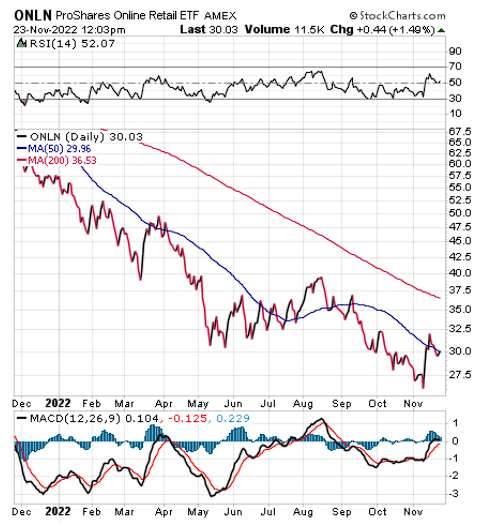What A Wonderful World
I was recently at a gathering of musician friends, and one of them asked me what my favorite song was. After a brief pause, I replied with a title that surprised my fellow artists.
“‘What A Wonderful World,’ by Louis Armstrong,” I answered.
After digesting the surprised looks in the room, I went on to tell everyone why this was my favorite song. You see, this song’s lyrics and melody reflect what I call the “benevolent universe” premise.
The idea here, in essence, is that despite the peril, pain and struggle of life, the achievement of one’s values in this world is possible. Moreover, success, happiness and a deep sense of fulfillment can be attained — if you have a concentrated mind and a grateful heart willing to fight for it.
Let’s look at the lyrics here of “What A Wonderful World” in detail, and I’ll show you what I mean.
I see trees of green, red roses too
I see them bloom, for me and you
And I think to myself
What a wonderful world
The opening verse tells us that nature (e.g., the trees and roses that bloom), are proper subjects of human enjoyment, and that they are there for us to appreciate and admire. That realization right there makes this a wonderful world.
I see skies of blue, and clouds of white
The bright blessed day, dark sacred night
And I think to myself
What a wonderful world
In the second verse, we are reminded that bright days and dark nights, i.e., good times and bad times, are a natural part of the human condition, and thus both should be celebrated.
The colors of the rainbow, so pretty in the sky
Are also on the faces, of people going by
I see friends shaking hands, sayin’, “How do you do?”
They’re really sayin’, “I love you”
The lyrics in the bridge are perhaps my favorite, as friendship, human connection and love for your fellow sapiens is one of the most important values one can act to gain and/or keep.
I hear babies cryin’, I watch them grow
They’ll learn much more, than I’ll ever know
And I think to myself
What a wonderful world
Yes, I think to myself
What a wonderful world
Oh yeah!
In the last verse, we get life viewed with an optimistic tone and sense of wonder about the future, a future that will be better for our children, and presumably better because of things we’ve done. Notice there is no bitterness here about missed opportunity. Rather, there’s a happiness that this benevolent universe will continue to thrive for all mankind.
Finally, and this is very important, there is the “Oh yeah!” at the end of the song, sung so brilliantly by Armstrong. This simple phrase serves as an effusive-yet-subtle affirmation of existence that delivers that message better than just about any line I’ve heard in any song.
It is for these reasons that I call “What A Wonderful World” my favorite song. And it’s a song particularly appropriate for this Thanksgiving week, because when you view the world as wonderful, you become thankful for it. And, as William Blake once mused, “The thankful receiver bears a plentiful harvest.”
Now, it’s your turn. What is your favorite song, and why? I’d love to find out, so send me an email and let me know.
Happy Thanksgiving!
***************************************************************
ETF Talk: Recover Along With the Online Retail Sector
In recent years, more and more shopping has taken place online.
Though some online retailers may have appeared to underwhelm recently due to the decreasing pandemic bump, the overall trend towards shopping from the convenience and comfort of our homes is here to stay. For many investors, looking towards online over brick-and-mortar retailers seems like the only sensible way to invest in the sector.
One tool that can be used to gain exposure to the sector is ProShares Online Retail ETF (ONLN). This exchange-traded fund (ETF) holds a range of companies whose primary business is online, mobile or app-based sales.
The ETF has a global reach, with the majority of its 26 holdings — 74% — consisting of American companies but with a few entrants from elsewhere, mainly China. The fund’s rules include investing no more than 25% of assets in non-U.S. holdings, so the fund should remain primarily domestic with some global exposure.
ONLN holds $118.78 million in assets. Its expense ratio of 0.58% is somewhat high, as is often the case with relatively specialized funds, but it pays 1% in dividends. The fund’s performance shows that it has returned to pre-pandemic levels after more than doubling in 2020.
Largely as a result of those previously elevated prices, its one-year performance is -57.1%. However, this also means investors need not worry about investing in an industry already at its peak; ONLN has the potential to climb.

Chart courtesy of www.StockCharts.com
Top holdings of ONLN include Amazon.com Inc. (AMZN), 19.22%; Alibaba Group Holding (BABA), 11.31%; eBay Inc. (EBAY), 7.92%; Pinduoduo Inc. (PDD), 5.28%; and Sea Ltd. (SE), 5.22%. The top 10 account for 71% of assets. The holdings tend to be in large companies, with their average weighted market cap rolling in at $315 billion.
For investors interested in the online retail industry despite its recent setbacks, ProShares Online Retail ETF (ONLN) provides a convenient way to allocate assets accordingly.
As always, I am happy to answer any of your questions about ETFs, so do not hesitate to send me an email. You just may see your question answered in a future ETF Talk.
*********************************************************************
Wednesdays Mean Wisdom
Wednesdays are all about wisdom, and that’s particularly true at my podcast and lifestyle website, Way of the Renaissance Man.
This week’s insight was inspired by the 35th president of the United States, John F. Kennedy.

It has been 59 years since President Kennedy’s assassination, but his memory remains alive in the heart of America.
In this slice of presidential wisdom, Kennedy offers up a thought on gratitude, and the importance of acting on that sublime feeling.
To listen to this JFK-inspired insight, check out this week’s Wednesday Wisdom at Way of the Renaissance Man.
*****************************************************************
In case you missed it…
Revisiting Bear Market Realities
In May of this year, when it was clear the market had descended into bear territory, I wrote to you about what I called, “The Cold Hard Truth About Bear Markets.”
In that issue, I told you how long bear markets typically last, how much damage they do and how these market cycles really work. Today, I want to revisit this research, because the numbers here are eerily similar to where we are at right now in this current bear market.
The following bear market data comes to us from research conducted by Hartford Funds.
- Stocks lose 36% on average in a bear market. By contrast, stocks gain 114% on average during a bull market.
- Bear markets are normal. There have been 26 bear markets in the S&P 500 Index since 1928. However, there also have been 27 bull markets, and stocks have risen significantly over the long term.
- Bear markets tend to be short-lived. The average length of a bear market is 289 days, or about 9.6 months. That’s significantly shorter than the average length of a bull market, which is 991 days or 2.7 years.
- Bear markets have been less frequent since World War II. Between 1928 and 1945, there were 12 bear markets, or one about every 1.4 years. Since 1945, there have been 14, one about every 5.4 years.
- Half of the S&P 500 Index’s strongest days in the last 20 years occurred during a bear market. Another 34% of the market’s best days took place in the first two months of a bull market, before it was clear a bull market had begun.
- A bear market doesn’t necessarily indicate an economic recession. There have been 26 bear markets since 1929, but only 15 recessions during that time. Bear markets often go hand in hand with a slowing economy, but a declining market doesn’t necessarily mean a recession is looming.
- Bear markets can be painful, but overall, markets are positive most of the time. Of the last 92 years of market history, bear markets have comprised only about 20.6 of those years. Stated differently, stocks have been on the rise 78% of the time.
Now, let’s compare those average statistics against the market as it stands today.
- The S&P 500 Index hit its most recent high on Jan. 3 and hit a 52-week low on Oct. 12. That’s a 25% fall from high to low over a period of 282 days.
- The Nasdaq Composite is down 28.4% year to date.
- The iShares MSCI EAFE ETF (EFA), an international equity benchmark, is down 17.3% year to date.
Consider one factor here that’s skewing these numbers: the near-70% surge in energy stocks this year. If we were to exclude that outlier sector from the S&P 500 Index performance calculation, the benchmark domestic index would be down about 35% year to date, which, of course, is right in line with the historical bear market average decline of 36%.
Moreover, if we peg the early January highs as the beginning of the current bear market, we have been in this selling environment for about 9.5 months. That’s almost precisely the average length of bear markets (9.6 months).
If you are a fan of statistical analysis, it’s hard not to acknowledge the symmetry here.
For the bulls, it’s easy to be encouraged by opportunity from this point forward that this statistical data represents. Of course, historical symmetry doesn’t mean the bear market is over. Yet one thing that I think we can say with absolute confidence is that if history is any harbinger of the future, we are likely very close to the end of this down-market cycle.
If you want to learn how we calculate the precise time to get back into stocks following a bear market, then I invite you to check out my Successful Investing advisory service, today.
*****************************************************************
Be A Charming Gardener
“Let us be grateful to people who make us happy, they are the charming gardeners who make our souls blossom.”
— Marcel Proust
Becoming happy isn’t easy. It’s actually hard work. But that work is much easier when you have gratitude, appreciation and love for, as Proust so poetically puts it, “the charming gardeners that make our souls blossom.” So, this Thanksgiving week, be a charming gardener and help other souls blossom.
Wisdom about money, investing and life can be found anywhere. If you have a good quote that you’d like me to share with your fellow readers, send it to me, along with any comments, questions and suggestions you have about my newsletters, seminars or anything else. Click here to ask Jim.


